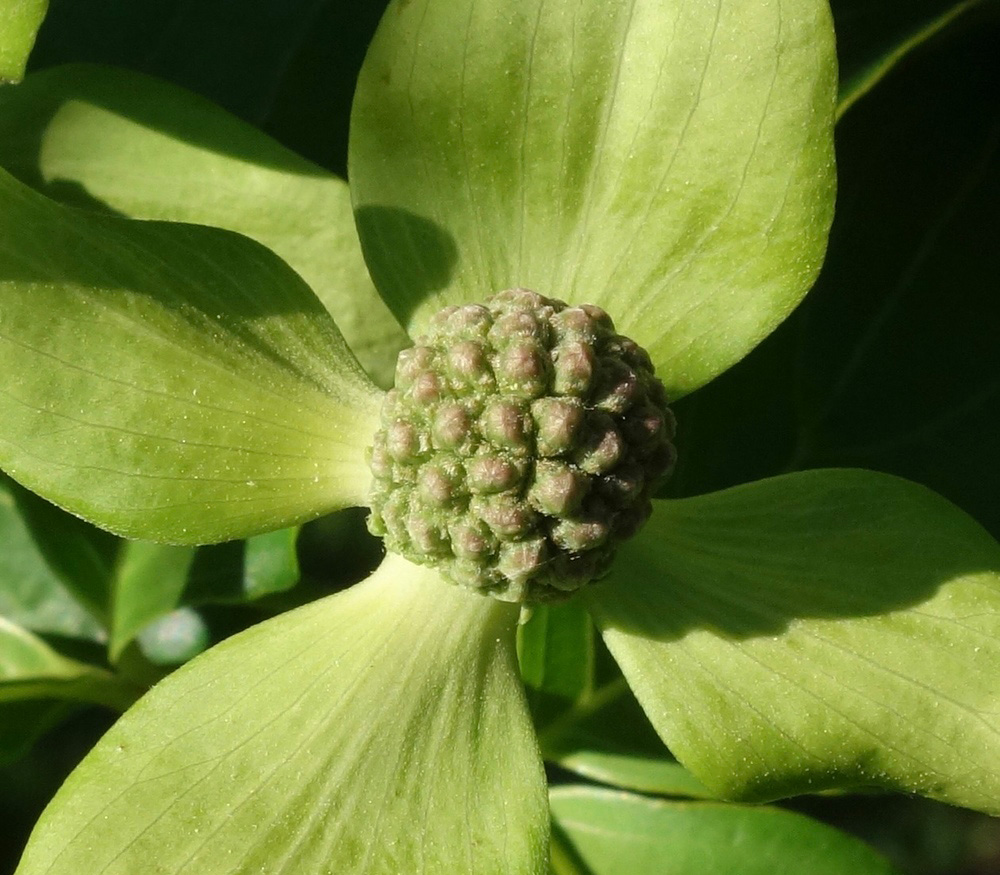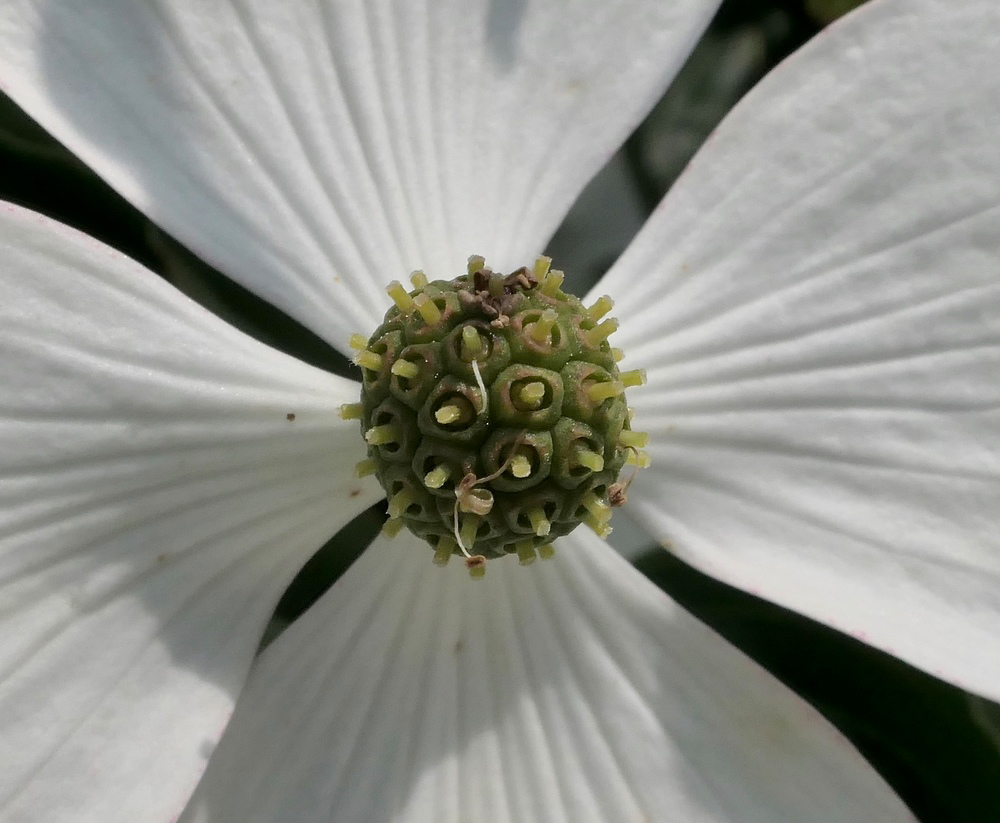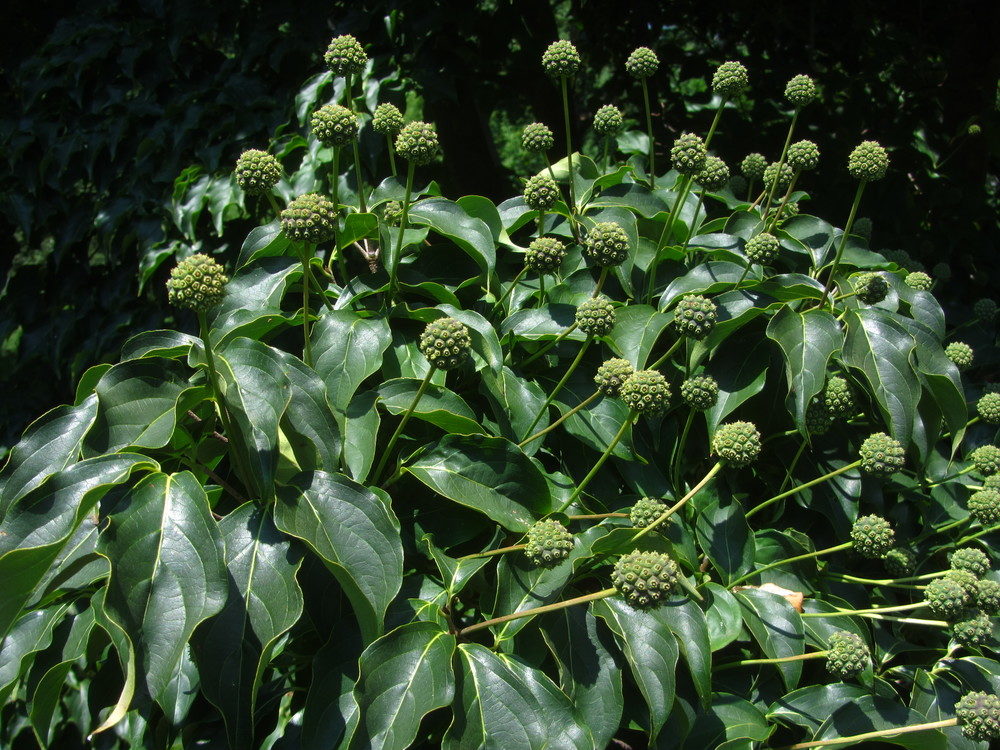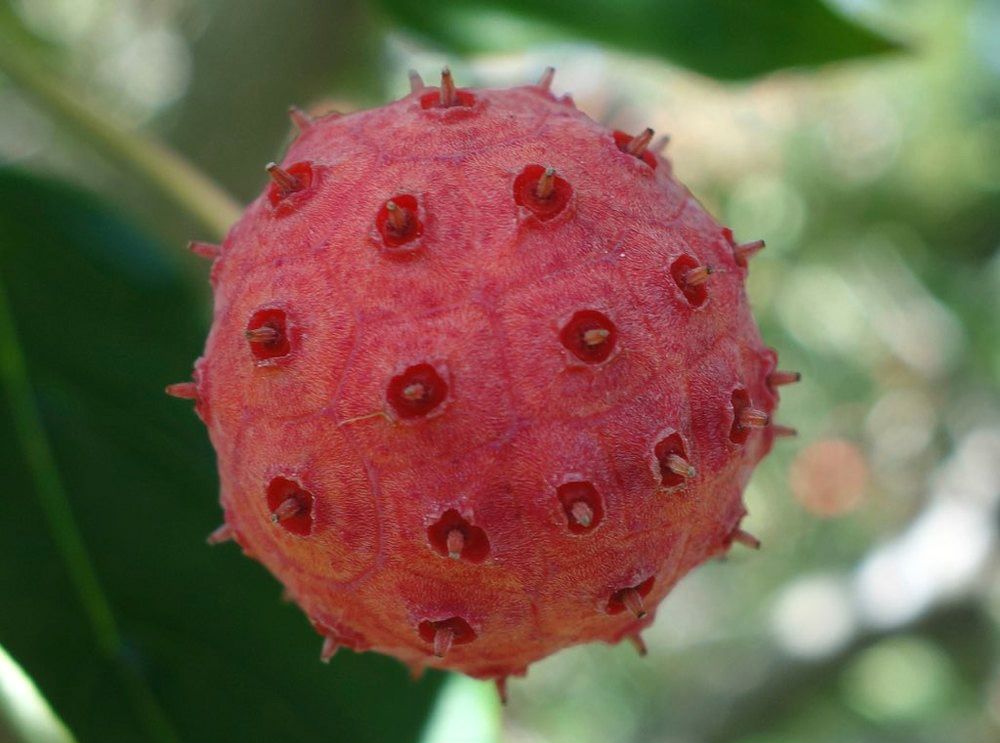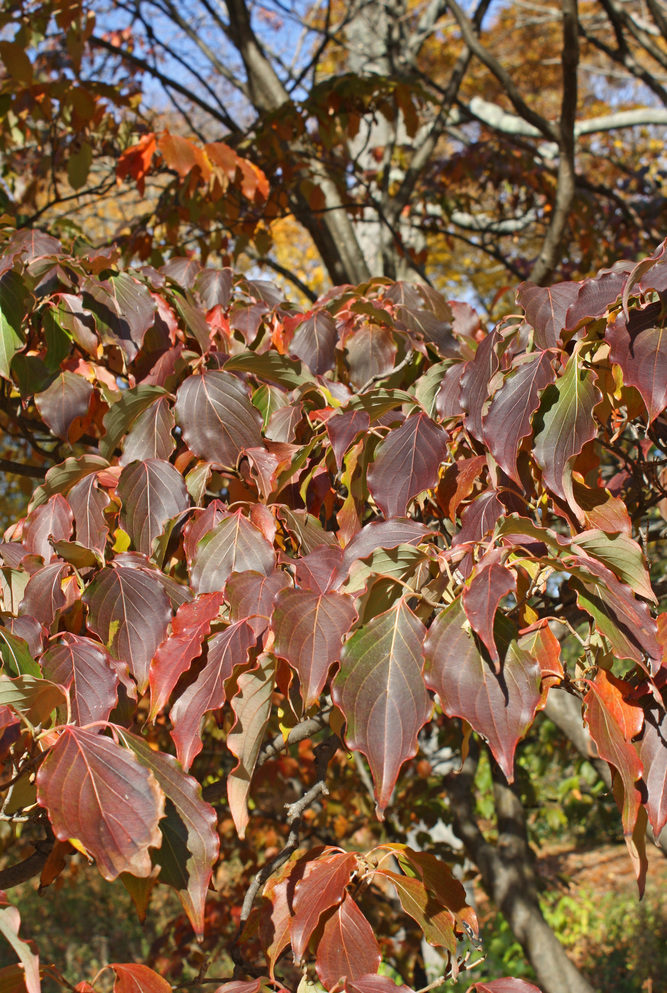1
Chinese Plum Yew
Cephalotaxus sinensis
1980 S.A.B.E. 1829
1980 SINO-AMERICAN BOT. EXP.
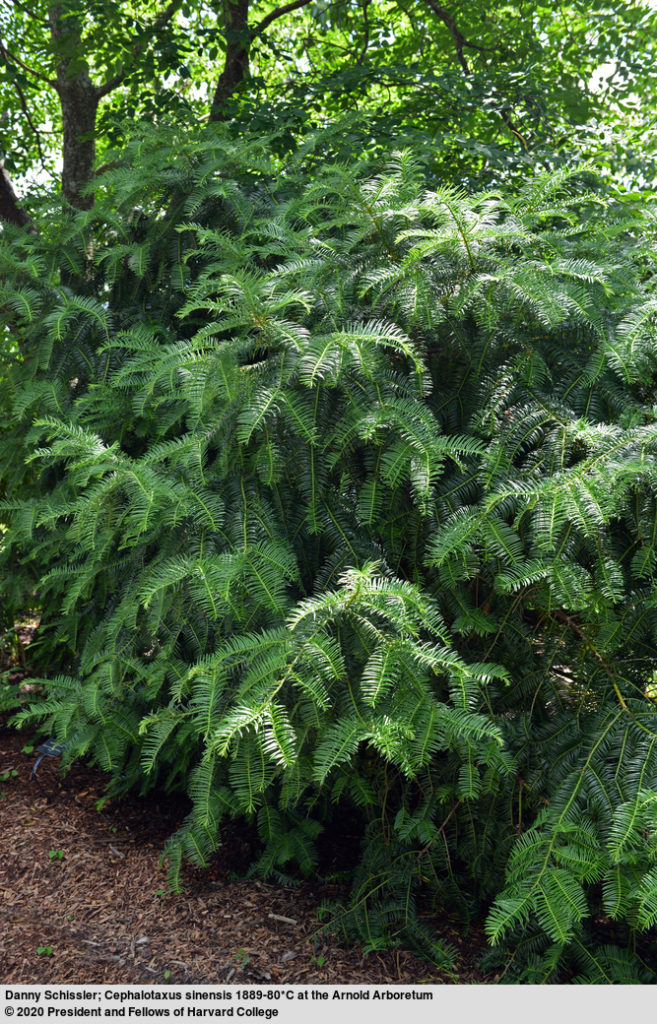
-
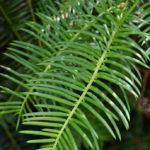
Waxy needles. -
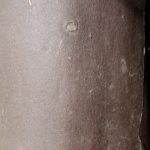
Smooth, dark brown bark. -
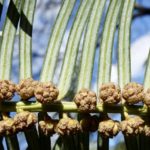
Male pollen cones.
Plant collecting is a team effort.
In 1980, a group of scientists and researchers embarked on a three-month trip through the Shennongjia Forest in central China. Representatives from five American institutions—including the Arnold Arboretum of Harvard University—joined colleagues from several Chinese institutions, tracing a route across Hubei Province. The trip—called the Sino-American Botanical Expedition—marked the first joint collecting trip between United States and Chinese institutions since 1949. The participants collected seeds, cuttings, and pressed herbarium specimens.
The seed for the Chinese plum yew was collected on September 26, in a thicket between a road and stream 5,000 feet above sea level. Some of the Arboretum’s 16,000 accessioned woody plants—meaning trees, shrubs, and vines that are part of a formal collection of living objects—were collected on the other side of the world. Others were collected in backyards and forests throughout North America.
Since the Arboretum’s first plant collecting expedition in 1877, the Arboretum has conducted or sponsored over 150 plant collecting trips around the Northern Hemisphere. (Woody plants from the Southern Hemisphere are very difficult to keep alive in Boston’s climate.)
Over the past century and a half, the logistics of collecting plant material have changed. Collectors work with better technology for packing and shipping plant material, and follow stricter regulations, both at home and especially abroad.
But the impulse remains the same: to grow a wide variety of woody plants, to study and learn from them, and to share them with visitors right here in Boston.
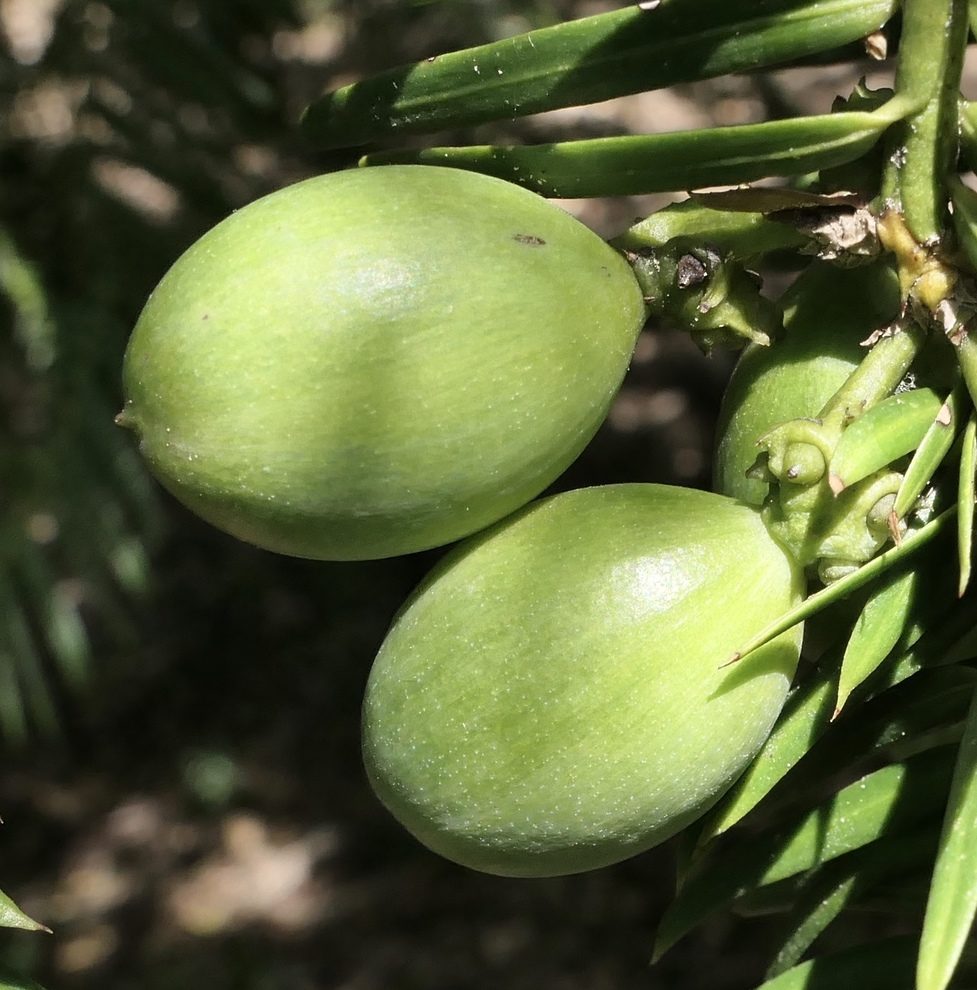
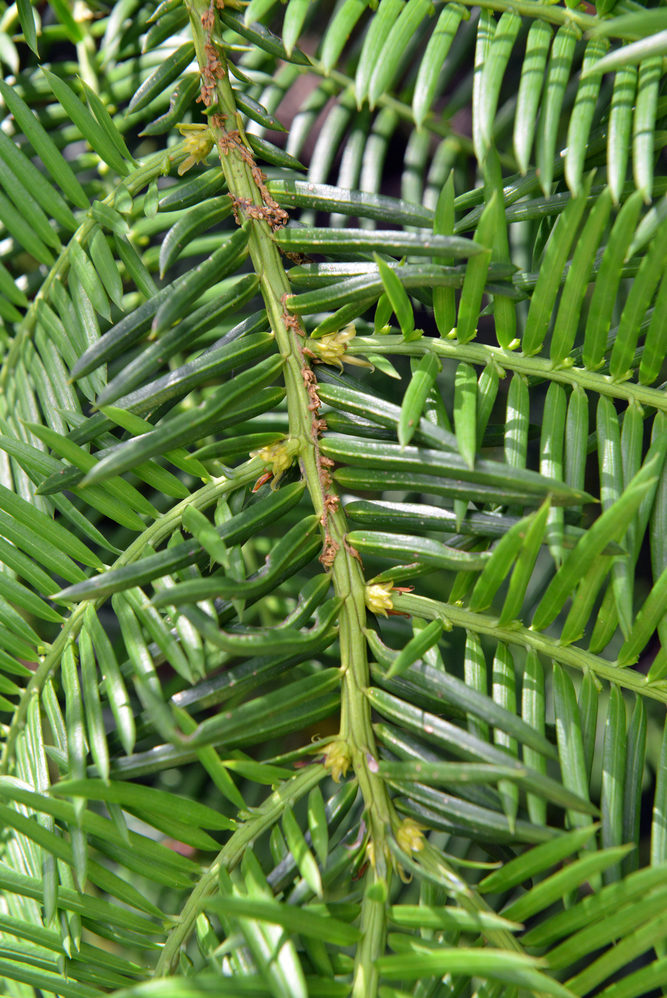
2
Paperbark Maple
Acer griseum
NACPEC ’94 WD075
NACPEC HUBEI EXPD. ’94
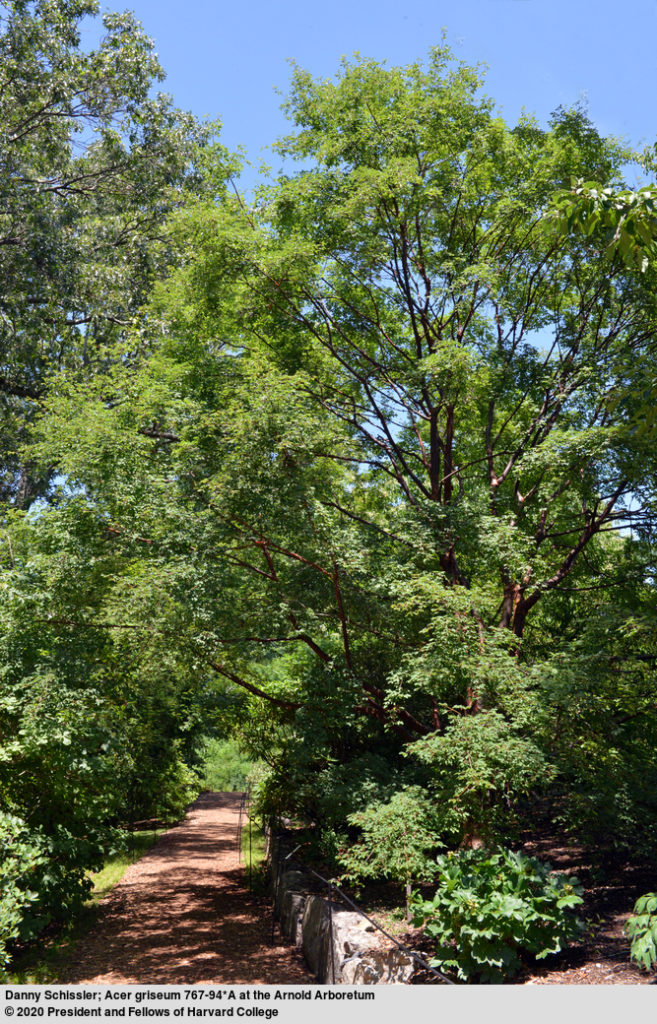
-
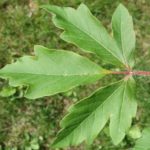
Compound leaf with three leaflets. -

Large winged seeds. -

Peeling copper-colored bark.
The first paperbark maple in the United States was introduced at the Arboretum in 1907.
The tree raised from that seedling is growing further down the path. The tree before you was collected in central China as a seedling by Arboretum scientist Peter Del Tredici and colleagues from other botanical gardens during a 1994 trip by NACPEC (North America-China Plant Exploration Consortium).
Before each collecting trip, institutions create a list of “target” plants to obtain. These plants are determined based on a variety of factors, including their conservation and ornamental value, within the bounds of any broader goals an institution may have.
In collecting this maple specifically in 1994, the Arboretum’s goal was to increase the genetic diversity of this species in cultivation. The species is endangered in its native China, and the majority of the paperbark maples in North America are descended from a single introduction. This is problematic, as species with less genetic diversity are less resistant to pests and disease and less likely to survive in varied climates.
Growing and safeguarding species outside their native habitats—like the cultivation of paperbark maple at the Arboretum—is called “ex situ conservation.” To protect biodiversity, institutions strive to cultivate plants from all over the species’ native range. In 2015, the NACPEC partner institutions embarked on a plant collecting trip aimed at sampling every known population of paperbark maple in China. The collectors traced a route of over 2,200 miles, sampling 66 trees to gather DNA information, seed, and herbarium vouchers.
Want to dig deeper?
Explore the Paperbark Maple Plant Bio




3
Chinese Redbud
Cercis chinensis
CHINA – AIELLO, A. S.,
DOSMANN, M., WANG, K.
NACPEC10-034
NACPEC SHAANXI, HEBEI, AND BEIJING PLANT EXPED. TRIP 2010

-

Open flowers. -
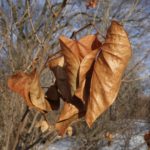
Dead leaves retained through winter.
This Chinese redbud is an experiment.
The species doesn’t normally tolerate Boston’s cold winters, but Arboretum staff have long recognized that the Explorers Garden provides a protected microclimate, given its sunny location on the south side of Bussey Hill.
For this reason, the garden often serves as a testing ground for species that might not survive in more exposed locations. This allows the Arboretum to protect and research a wider array of species, broadening conservation efforts, studying climate change impact scenarios, and introducing and hybridizing plants of horticultural value.
The seed for this plant was collected by Michael Dosmann, Arboretum Keeper of the Living Collections, on a trip with NACPEC.
NACPEC was formed in the early 1990s. An alliance of botanical institutions and universities from North America and China, NACPEC aims to increase knowledge-sharing between the two regions with similar climates.
Over the past quarter of a century, there have been almost 20 NACPEC expeditions. Today, over 25 percent of the wild-collected Chinese plants in the Arboretum’s landscape are the result of this partnership.




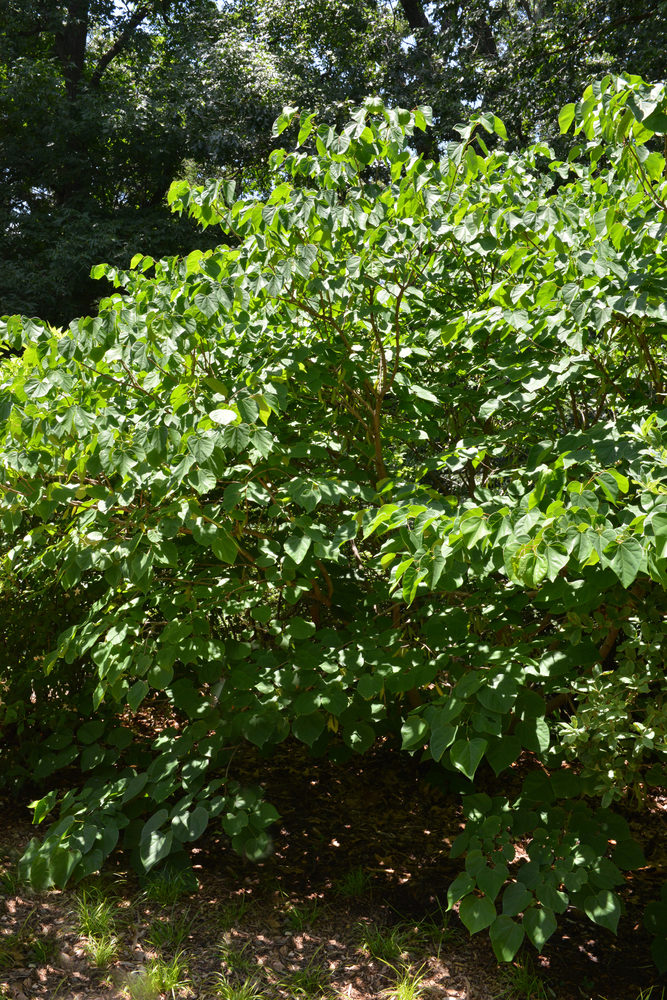
4
Franklin Tree
Franklinia alatamaha
THOS. MEEHAN & SON, PA

-

Breaking flower buds. -
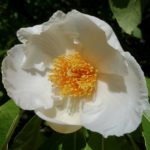
Large, cream-colored blossoms. -

Glossy, narrow leaves.
This tree and its neighbor are the largest and oldest Franklin trees in the world.
John and William Bartram first discovered the Franklin tree in 1765 along the Altamaha River in southeastern Georgia, only a few decades before the species completely disappeared from the wild. William returned in 1776 to collect seed from the plant and successfully germinated it in his family’s garden in Philadelphia.
In 1884, the Arnold Arboretum received a Franklin tree from the nursery of Thomas Meehan, who lived near the Bartram’s family garden. Two cuttings from the original plant were sited on the southwestern slope of Bussey Hill—one of the mildest environments in the Arboretum—to help them establish.
Horticulturists worked hard in the early years to protect the young plants from Boston’s harsh winters. Through their efforts, these trees have persisted into their old age.
Without William Bartram’s initial collection of Franklin tree in 1776 and subsequent conservation work at institutions like the Arnold Arboretum, the species would no longer exist—and may have never been discovered before becoming extinct in the wild.
Every Franklin tree alive today descends from the seed gathered and sown by Bartram. Ex situ (off-site) conservation efforts of botanical gardens and arboreta around the world are crucial to this species’ survival.
Want to dig deeper?
Explore the Franklin Tree Plant Bio



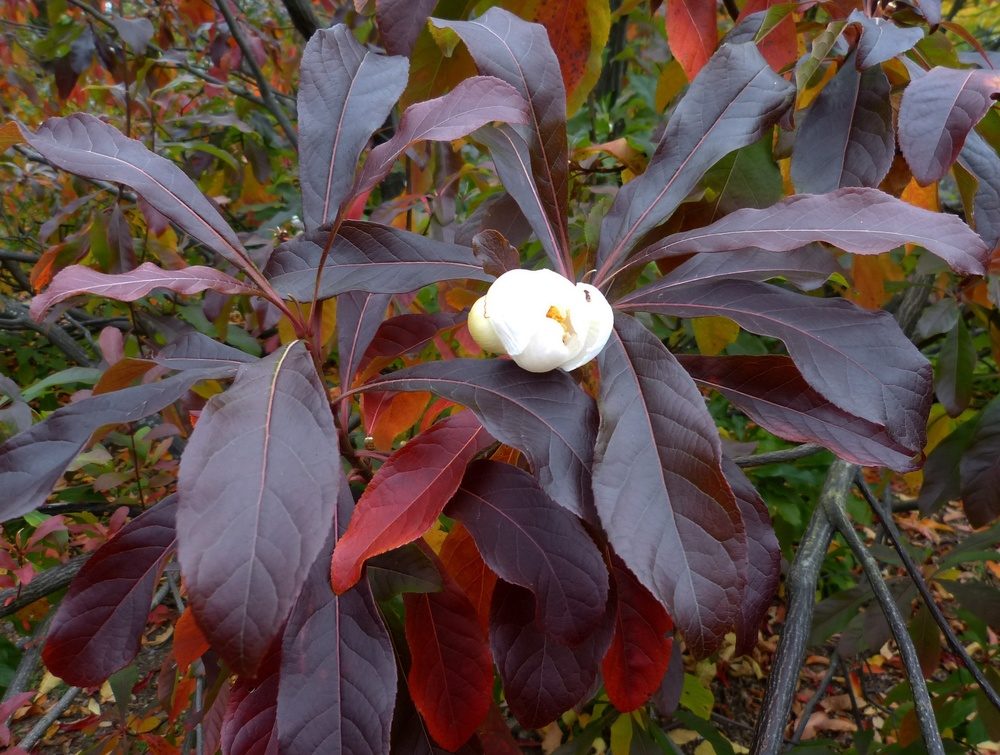
5
Pinkshell Azalea
Rhododendron vaseyi
STATES – NICHOLSON, R.
1985 S.E. STATES EXP.
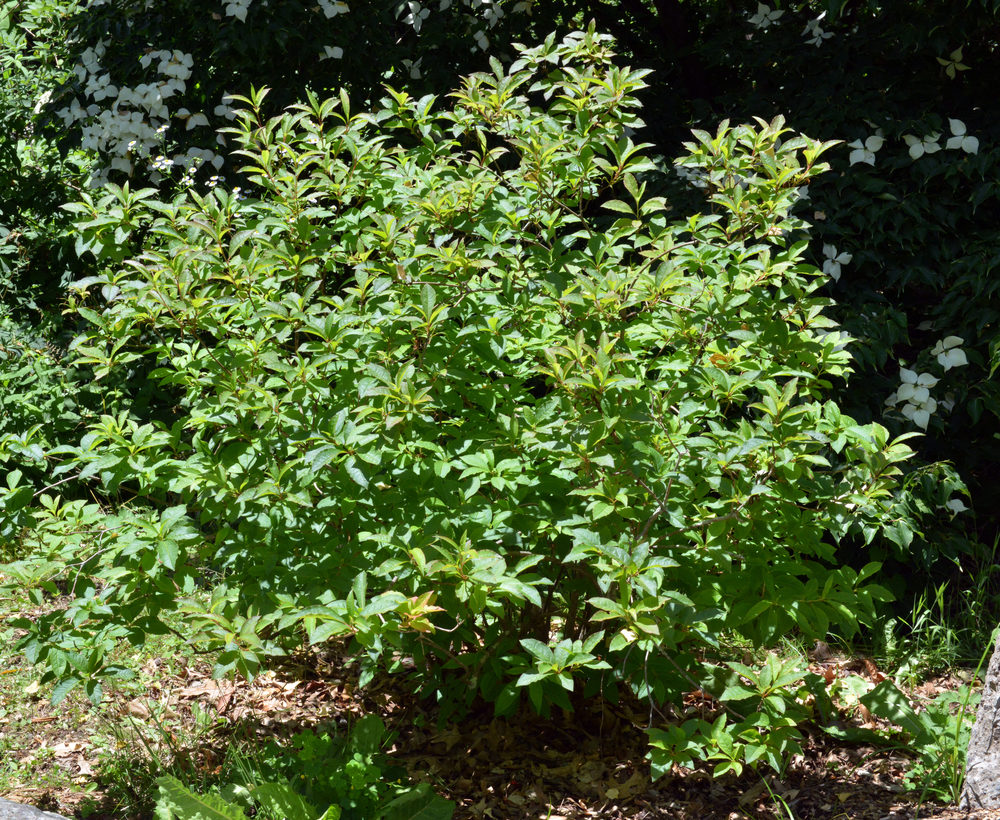
-
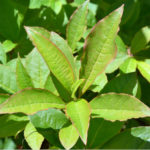
Narrow leaves arranged in whorls. -
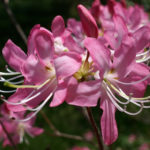
Brilliant blossoms appear in late spring. -
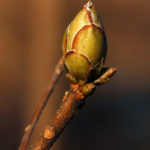
Dormant bud with prominent scales.
Severely threatened in the wild, this magnificent azalea is conserved among the Arboretum’s living collections.
The Arboretum has a long history with the rare pinkshell azalea. The first specimen came to the Arboretum in 1880, though the most significant collections—resulting in the seed for the plant before you—occurred a century later, during the 1985 Southeastern States Expedition through Florida, Georgia, Tennessee, and North Carolina.
The expedition was organized in partnership with the Center for Plant Conservation—also called the CPC—which was founded at the Arboretum in 1984. Today, the CPC operates out of California. A network of over 50 participating institutions, the CPC systematically conserves plants that are endangered or rare in the wild.
The Arboretum is an active participant in the CPC, stewarding several plant types, including the pinkshell azalea. The plant’s native range in North Carolina is limited, and the plant is vulnerable to habitat destruction. The Arboretum maintains over 25 genetically distinct lineages of the plant, and has over 40 specimens planted throughout the landscape.
More than 20 percent of the Earth’s plants are threatened with extinction. Through coordinated, collaborative partnerships with initiatives like the CPC, the Arboretum works, year-round, to save threatened plants.

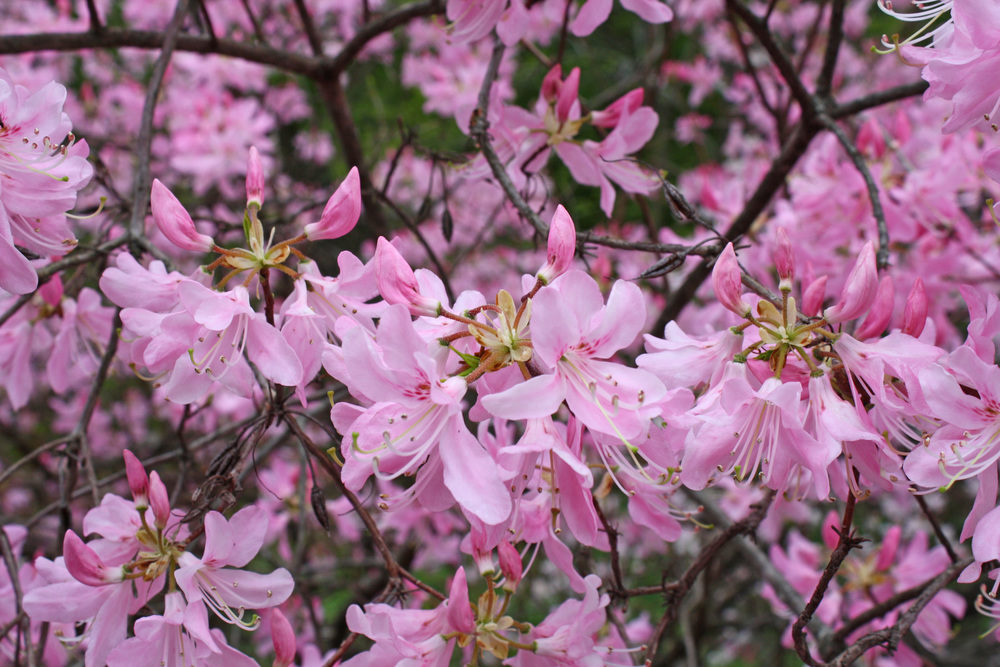

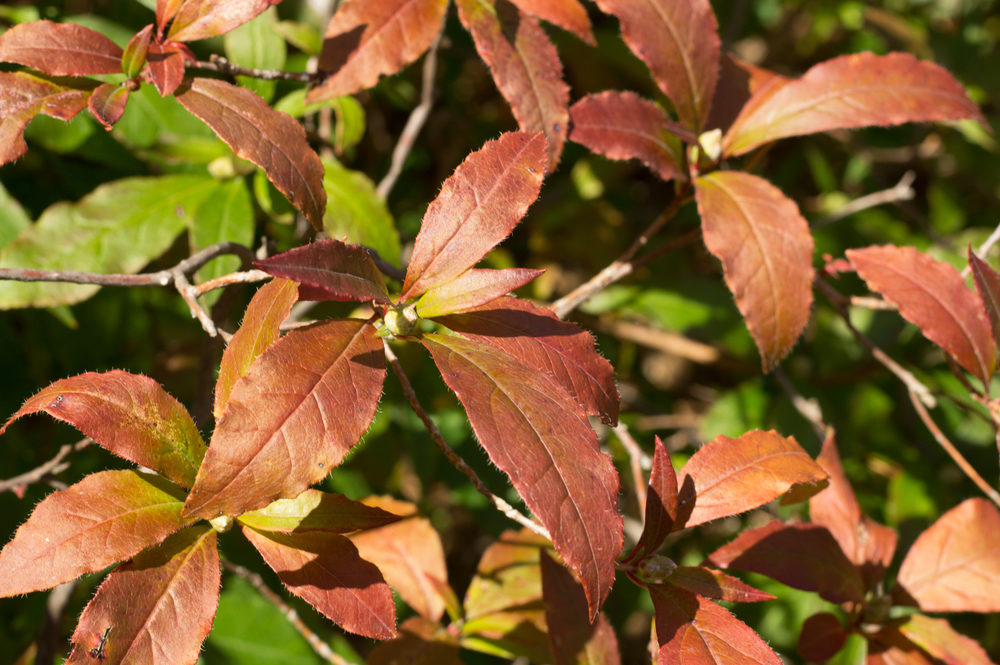
6
Chinese Fringetree
Chionanthus retusus
IMP. BOT. GDN., TOKYO, JAPAN
This Chinese fringetree is widely regarded as one of the Arboretum’s showstoppers.
The seed for this tree arrived at the Arboretum in 1901, sent from the Imperial Botanic Garden in Tokyo, Japan. This type of institutional partnership is crucial to worldwide conservation efforts and botanical exchange, and has only increased in the past century. Today, the Arboretum strives to collect species from the wild, and Arboretum staff work closely with colleagues on the ground throughout the collection process.
The first step in a collecting trip is planning. Working with local botanical experts, Arboretum staff research the region to identify target plants and determine when they are most likely to have viable seeds. The collaborators create an itinerary of target plants, collection sites, and lodging.
On an expedition, the collectors collect three things: first, the actual plant collections—the seeds, cuttings, and seedlings that will be shipped back to the home institutions. Equally important are the records that are kept—careful notation of a collected plant’s condition, location, and surrounding environment. Last, the collectors create herbarium vouchers—pressed and dried samples of each plant they collect that are permanently housed in an herbarium archive.
At the end of a long day in the field, the team has more work ahead of them. Back at the hotel, they must sort through the day’s collections to prepare them for shipping. Different seeds require different treatments. Some need to be cleaned and dried, while some need to be packed in sphagnum moss to retain moisture. Herbarium vouchers are transferred to large wooden presses for safekeeping. All of the photographs and data that were collected are entered into a computer.
The hallmark of successful plant collecting is careful, thorough notation, from planning a precise itinerary to painstakingly labeling each collection. It’s impossible to anticipate all of the bumps in the road—every plant collecting expedition has surprises and setbacks. But with the right amount of planning and the right partners, plenty of new seeds make their way to the Arboretum, and out into our landscape.

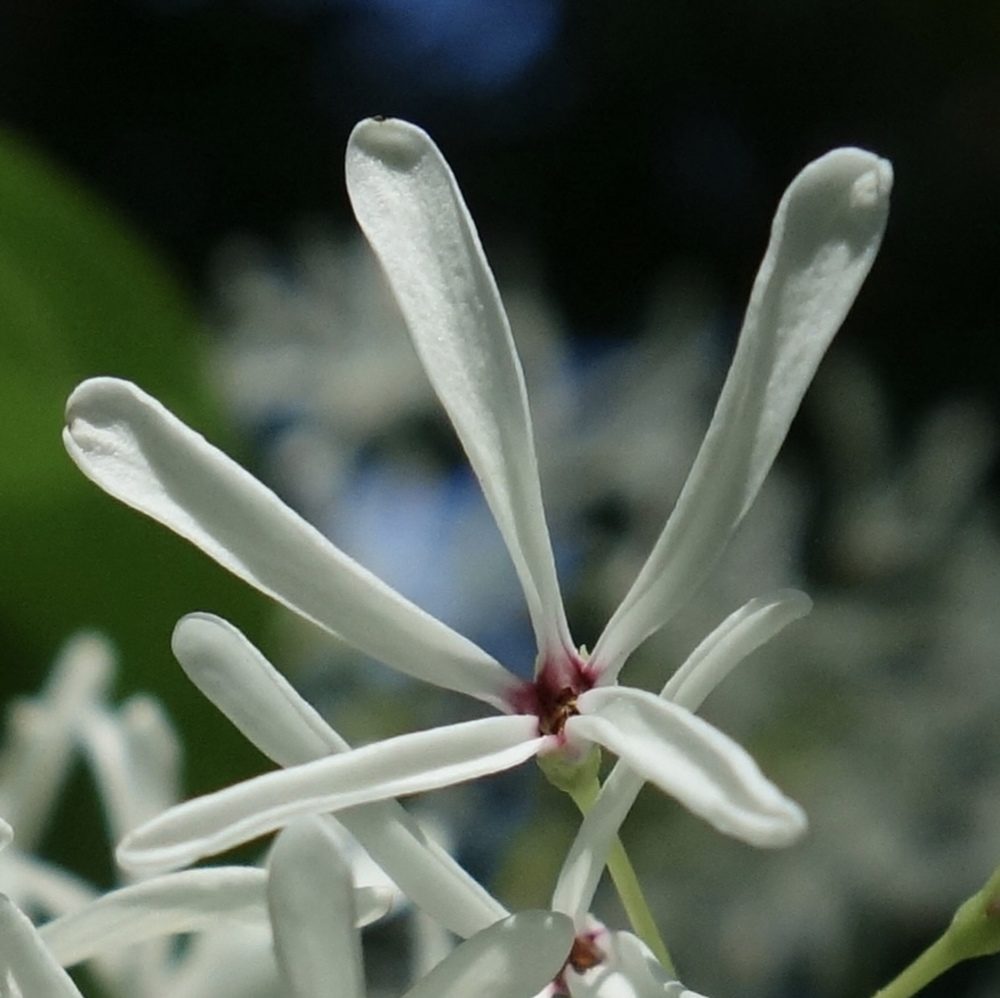
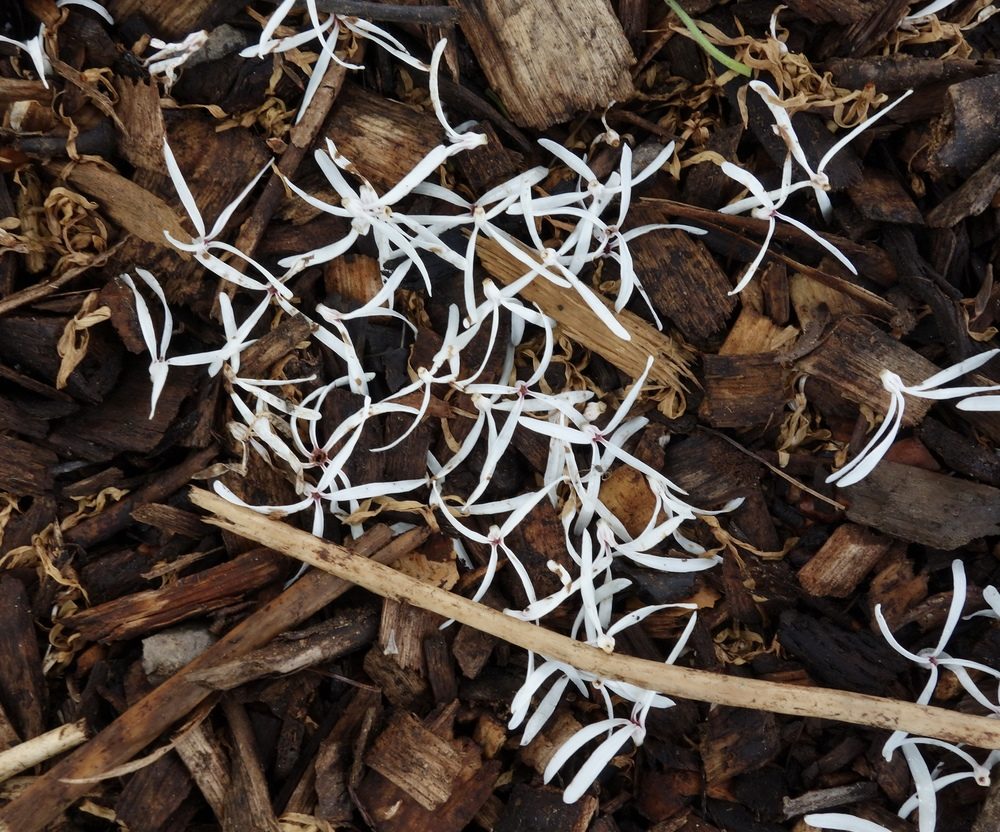
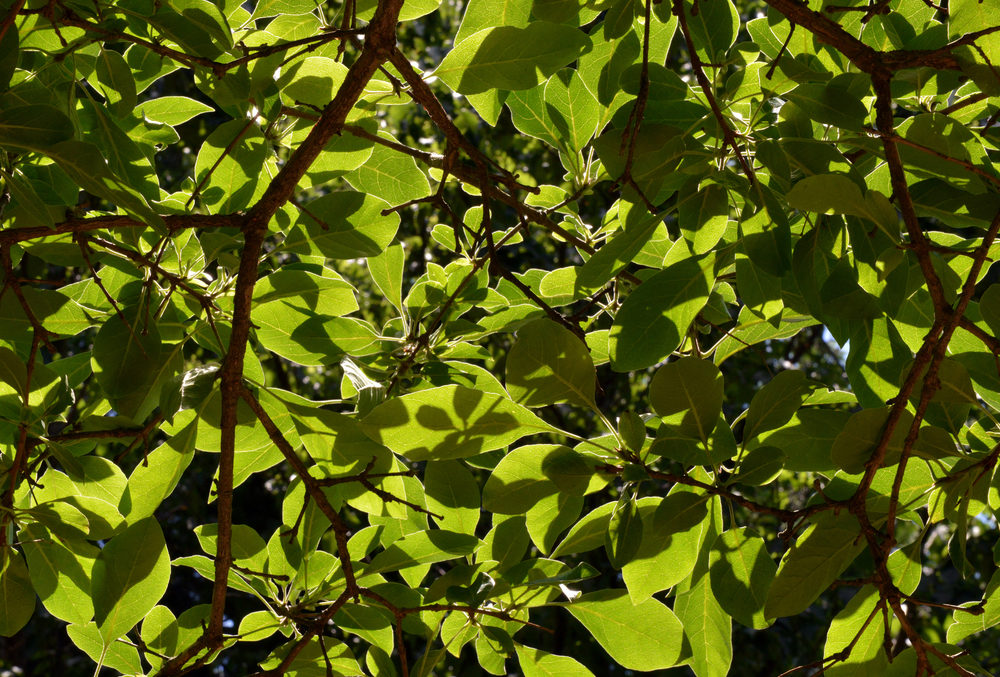
7
Vilmorin Dove Tree
Davidia involucrata var. vilmoriniana
CHINA – FARGES, PERE PAUL
GUILLAUME
VILMORIN-ANDRIEUX, FRANCE
The dove tree is a perennial favorite at the Arboretum.
In 1899, Ernest Wilson was 22 years old and studying at the Royal College of Science in the United Kingdom. At the time, a booming garden and horticultural industry was scrambling for seed from East Asia, and Wilson was approached by Sir Harry Veitch for a specific mission—to travel to China to collect seeds of the dove tree, also called Davidia involucrata. The tree had been observed by Western botanists 30 years earlier, and quickly earned a reputation as a highly desirable specimen.
Wilson was given clear instructions. Veitch told him that “the object of the journey is to collect a quantity of seeds … do not dissipate time, energy or money on anything else.”
With this definitive mission, Wilson travelled to central China, spending the next several months searching for the tree. He traveled to a spot where a tree had been seen more than a decade earlier. When he arrived, he found the tree had recently been chopped down. Wilson’s frustration is clear from his account of the trip. He wrote, “I did not sleep during the night of April 25, 1900.”
Just a few weeks afterward, however, Wilson came upon a large dove tree. He sent seed back to Veitch, who distributed it worldwide.
Wilson made a name for himself as a resourceful and effective plant collector. He was recruited by the Arboretum in 1906, and spent the next two decades travelling around the world, collecting specimens and taking photographs. He left an indelible mark on the Arboretum’s landscape, and on the Arboretum’s archives, which provide rich documentation of his perspective of early 20th century East Asia.
The Arboretum’s most celebrated dove tree specimen—the one before you—was collected by Père Farges in 1897, and came here via an arboretum in Les Barres, France. A dove tree grown from Wilson’s collecting trip is growing along the path just behind you and to the right.
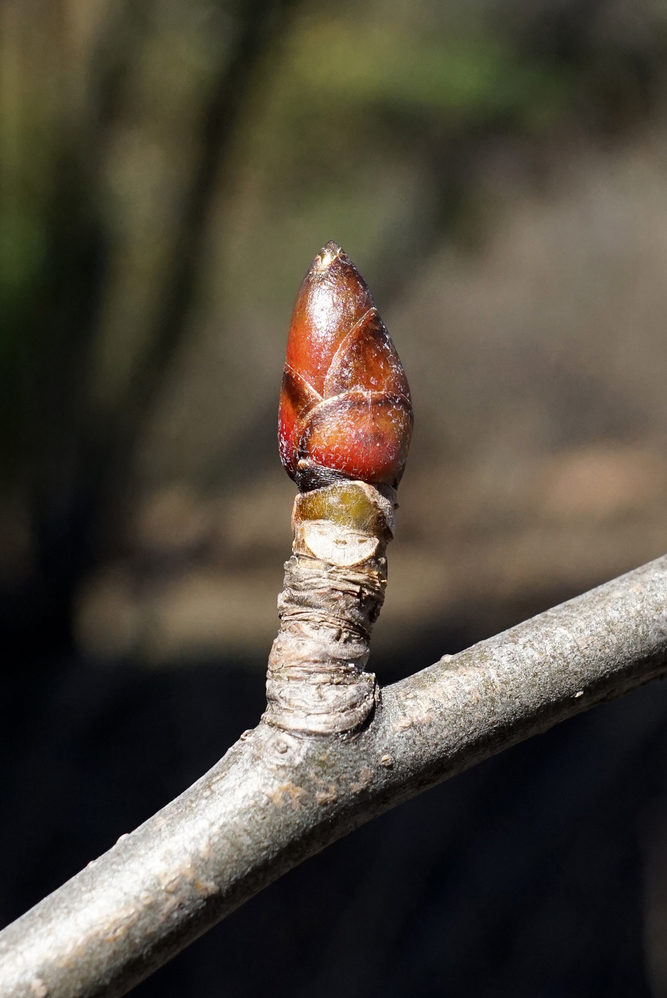
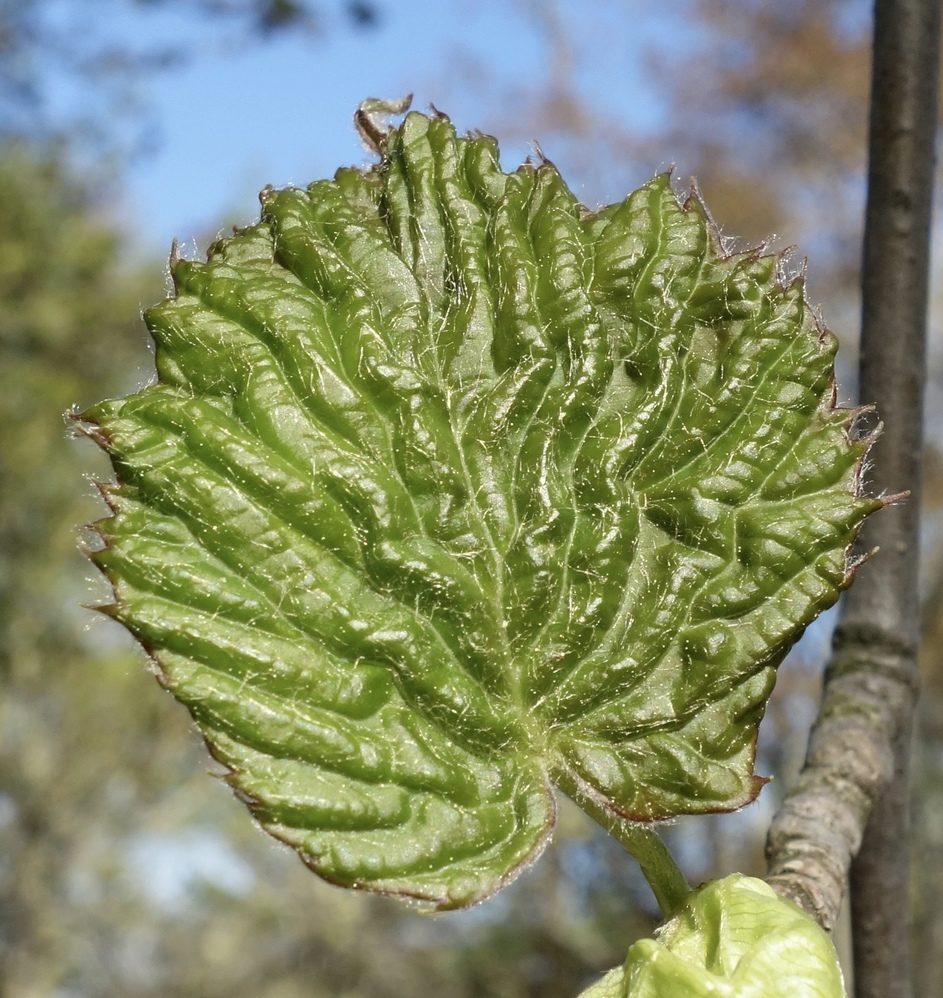
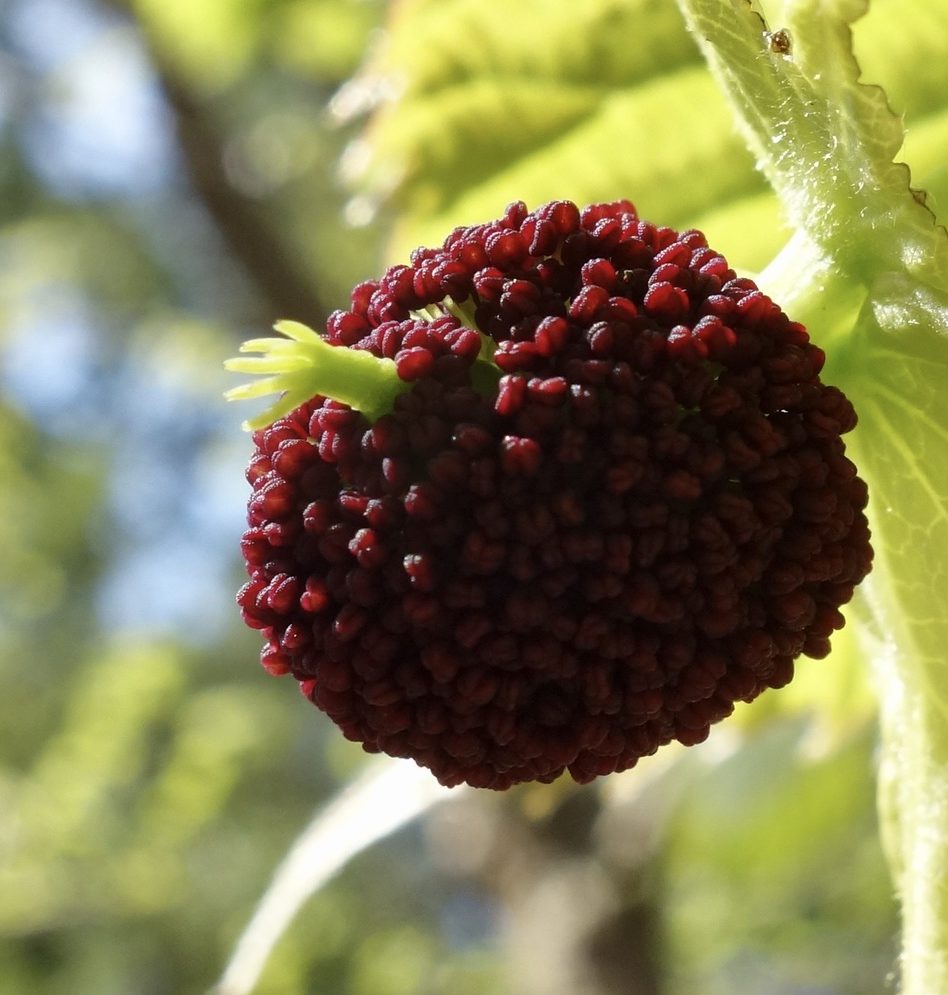
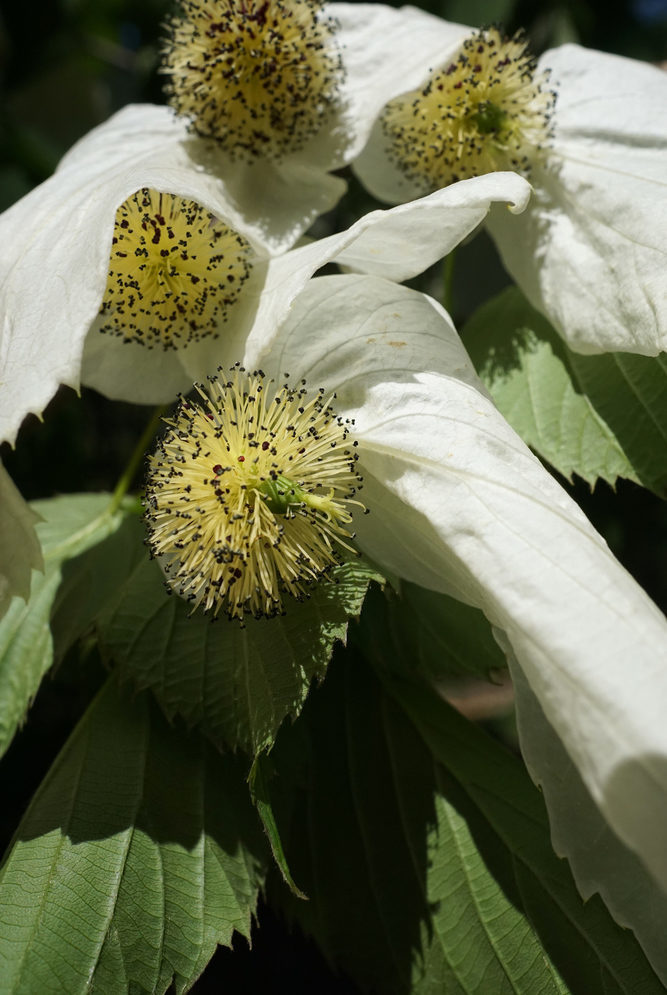
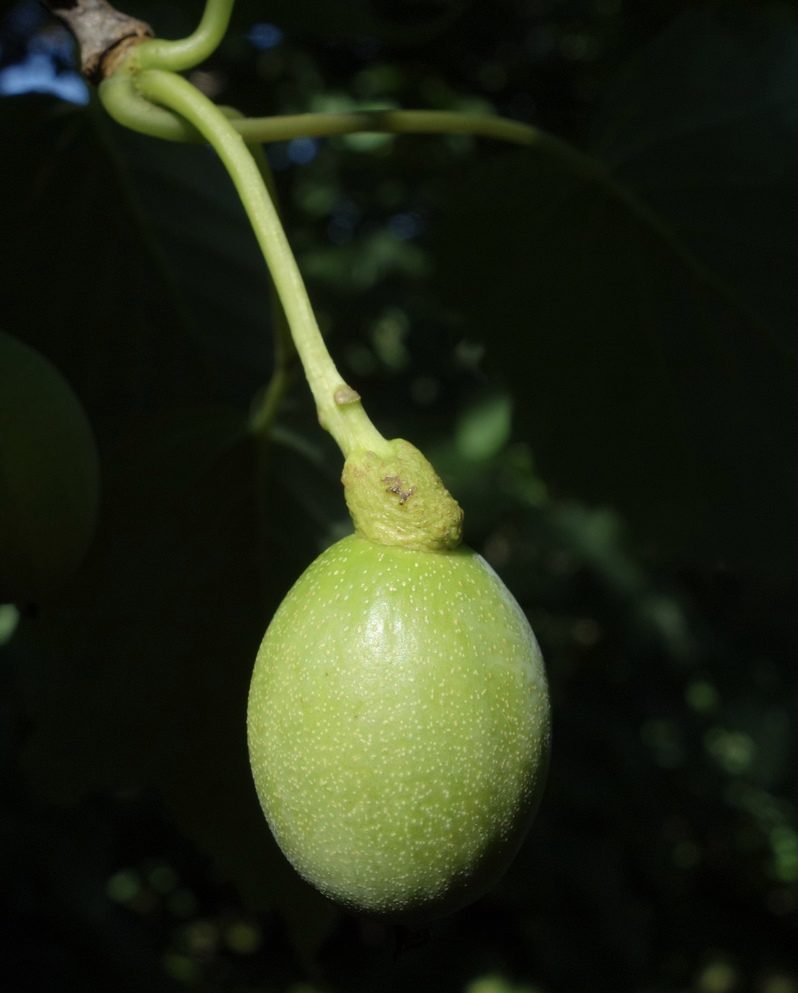
8
Chinese Stewartia
Stewartia sinensis
NACPEC ’94 WD075
NACPEC HUBEI EXPD. ’94

-
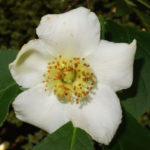
Flowers with five cream-colored petals. -
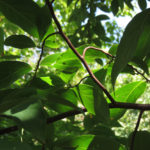
Ovate, simple leaves. -
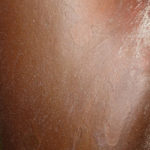
Smooth bark, sometimes flaking.
This Chinese stewartia traveled all the way from a mountainside in China in 1994.
In 1994, Arboretum scientist Peter Del Tredici participated in a NACPEC collecting trip to central China. A group of Chinese and North American plant collectors traced paths up and down Wudang mountain, looking for target species.
On September 20, the group passed a small, eight-inch-tall seedling of Chinese stewartia. Del Tredici dug it up, and prepared the seedling for its long journey back to the Arboretum.
Incoming plant material, whether it’s seeds—or, less commonly, seedlings or cuttings—must enter the United States through the United States Department of Agriculture, or USDA. The USDA’s Animal and Plant Health Inspection Service issues permits for importing seeds and other material, and runs processing centers around the country that review the incoming shipments. At these centers, the plant material is carefully checked for harmful pests and disease.
After the tree before you was collected on Wudang mountain, the soil was washed away from its roots, and the seedling was packed in moist sphagnum moss. It was shipped to the USDA inspection station in Beltsville, Maryland, and, after 48 days on the road, arrived at the Arboretum on November 7, 1994. After six years in the greenhouses and nurseries, it was planted here in 2000, in the midst of many of the stewartias that make up the Arboretum’s nationally accredited collection.

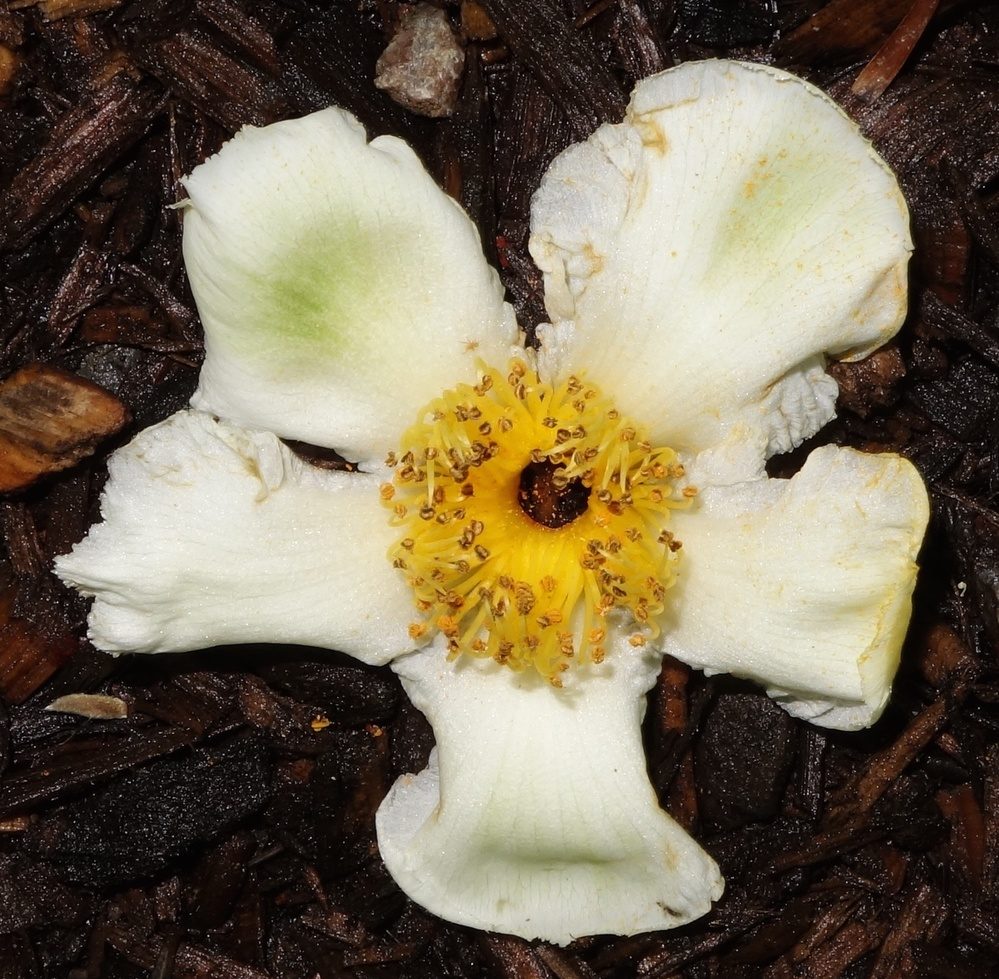
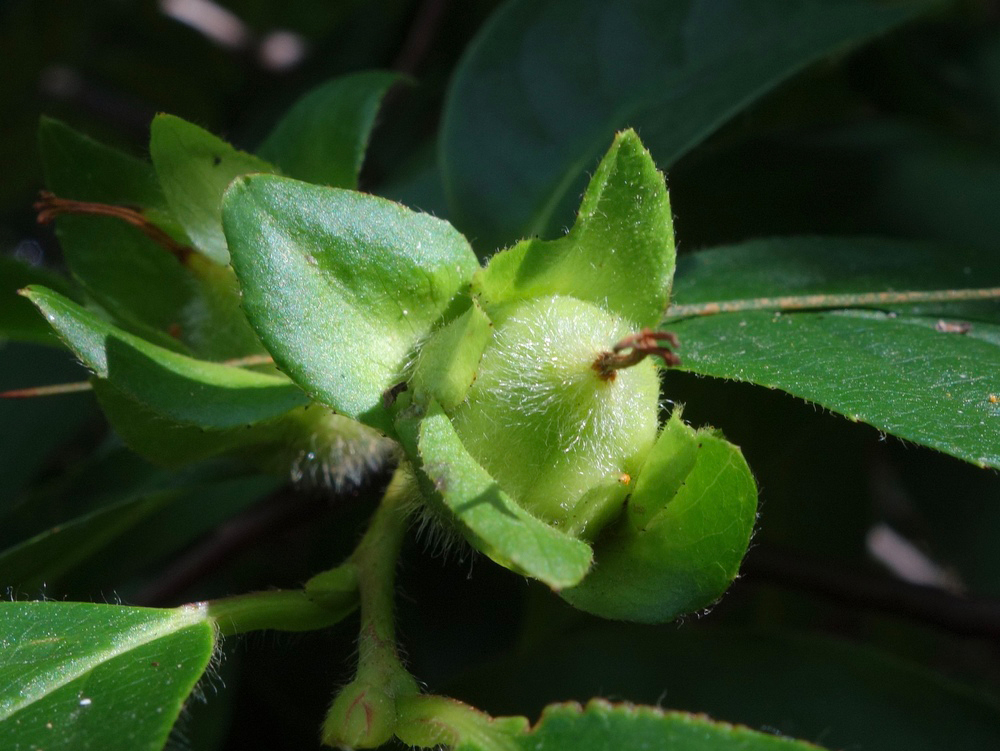

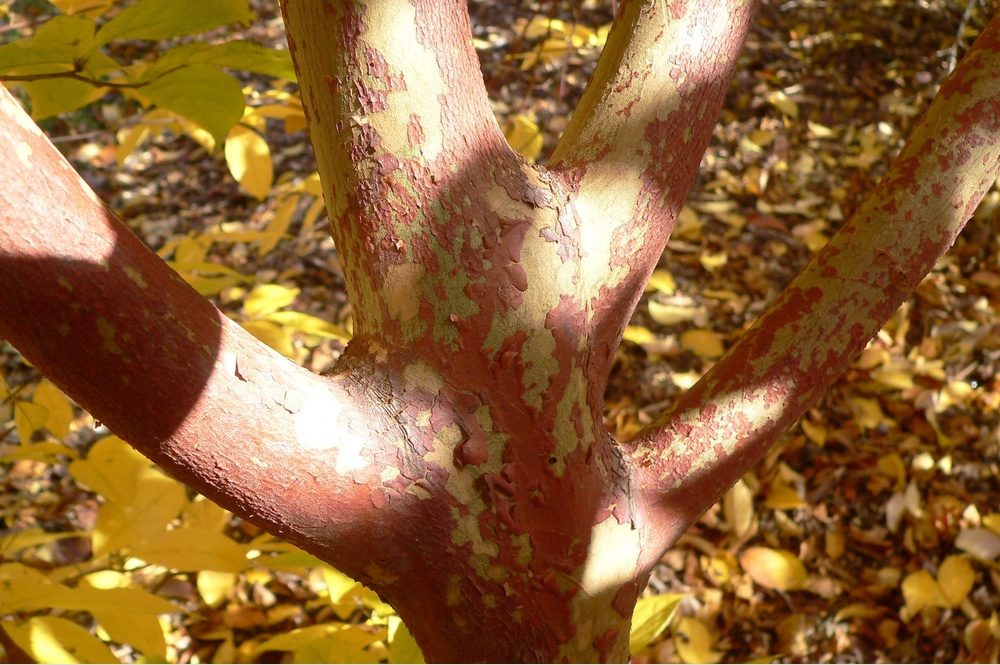
9
Seven Son Flower
Heptacodium miconioides
CHINA – SPONGBERG, S. A. 10
S. A. SPONGBERG, ARNOLD ARB.
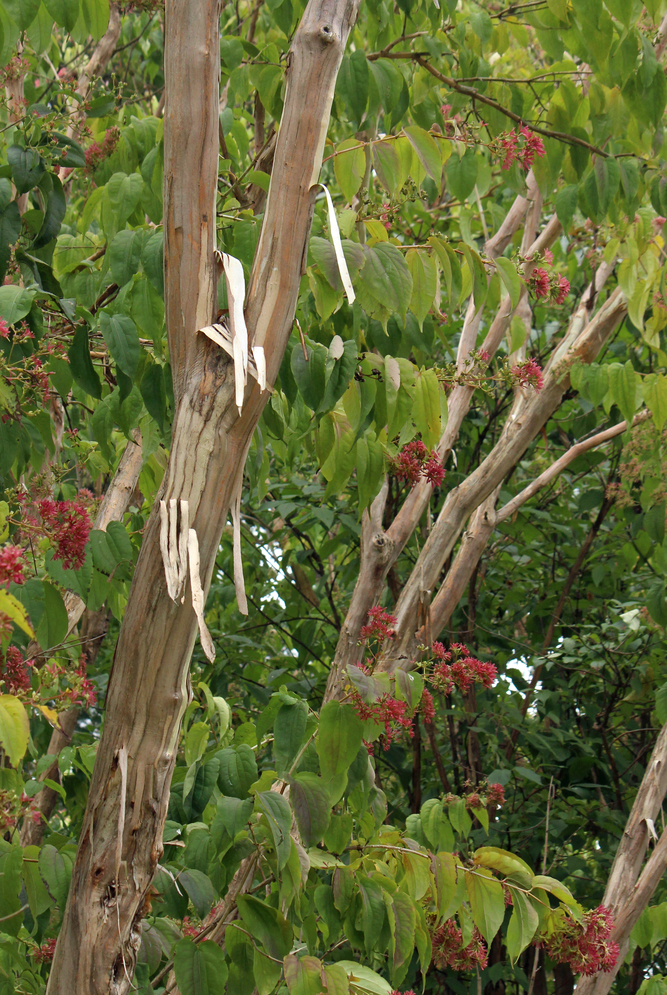
-
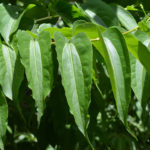
Long, cordate leaves in deep green. -
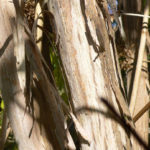
Gray-brown papery, peeling bark.
This seven son flower began as a cutting from one of the first of its kind to reach the United States.
Not every plant in the Arboretum’s landscape grew from a seed. This seven son flower was propagated—or grown—from a cutting of another seven son flower at the Arboretum—one of the oldest specimens in North America. The greenhouse staff worked with the horticultural crew to carefully remove twigs from the existing plant and coax them to produce new roots.
The Arboretum’s greenhouses are the starting point for every new plant at the Arboretum, whether the plant arrives as seed, a seedling, or, like this seven son flower, as a re-propagation from an existing plant. When plant collectors ship plant material—seeds, cuttings, or seedlings—from the field, it arrives at the greenhouses after it clears customs.
The first step is always the same: the new material is given a unique identifying number and entered into the Arboretum’s records. This makes the specimen an official accession in the Arboretum’s collection.
Then, the greenhouse staff begins the careful process of assessing the incoming material. This may involve cleaning seeds by soaking, drying, or sieving, and scanning for pests. The staff works quickly to determine the best protocols for propagating the material.
Over the next few years, the plants follow a progression from the humid greenhouses to individual outdoor containers. If the plants thrive, they are transplanted into the ground in longer-term outdoor nurseries. Once they are large enough, they are ready to be planted in the Arboretum’s landscape.
The length of time between when plant material enters the greenhouses and when a specimen is planted in the landscape varies, but it is usually several years. The seven son flower before you spent three years growing in the greenhouses before it was planted in this spot in 1994. Over those years, it was carefully tended and monitored by the greenhouse, curation, and horticultural staff.
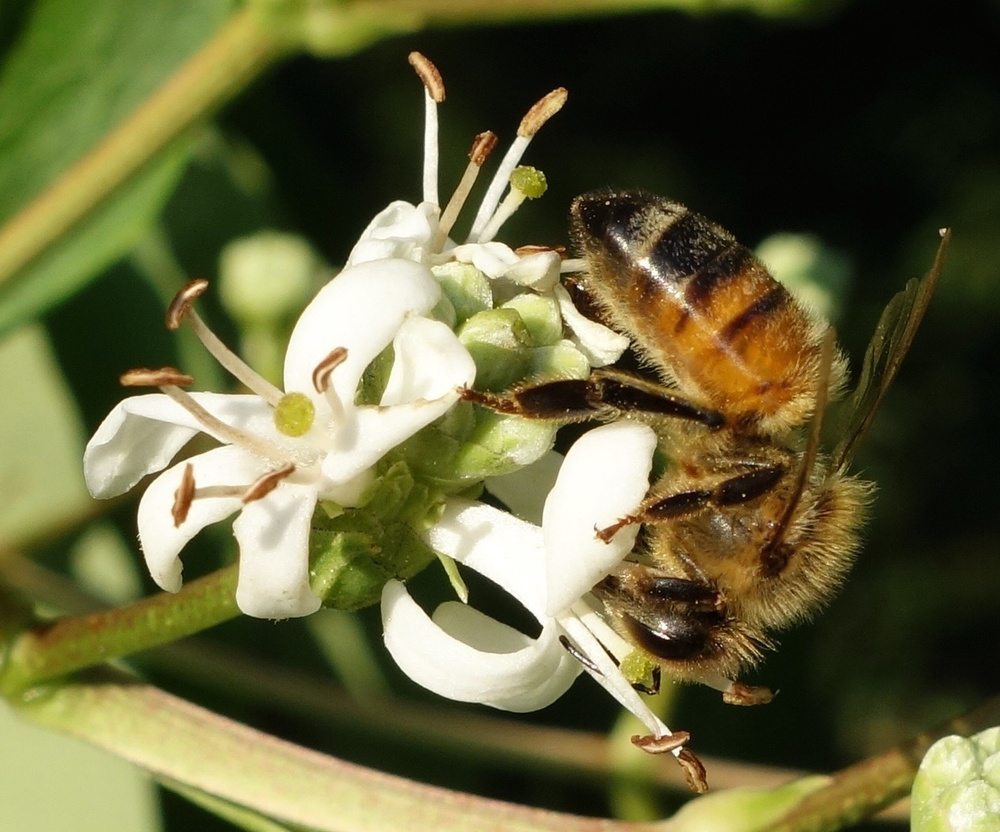
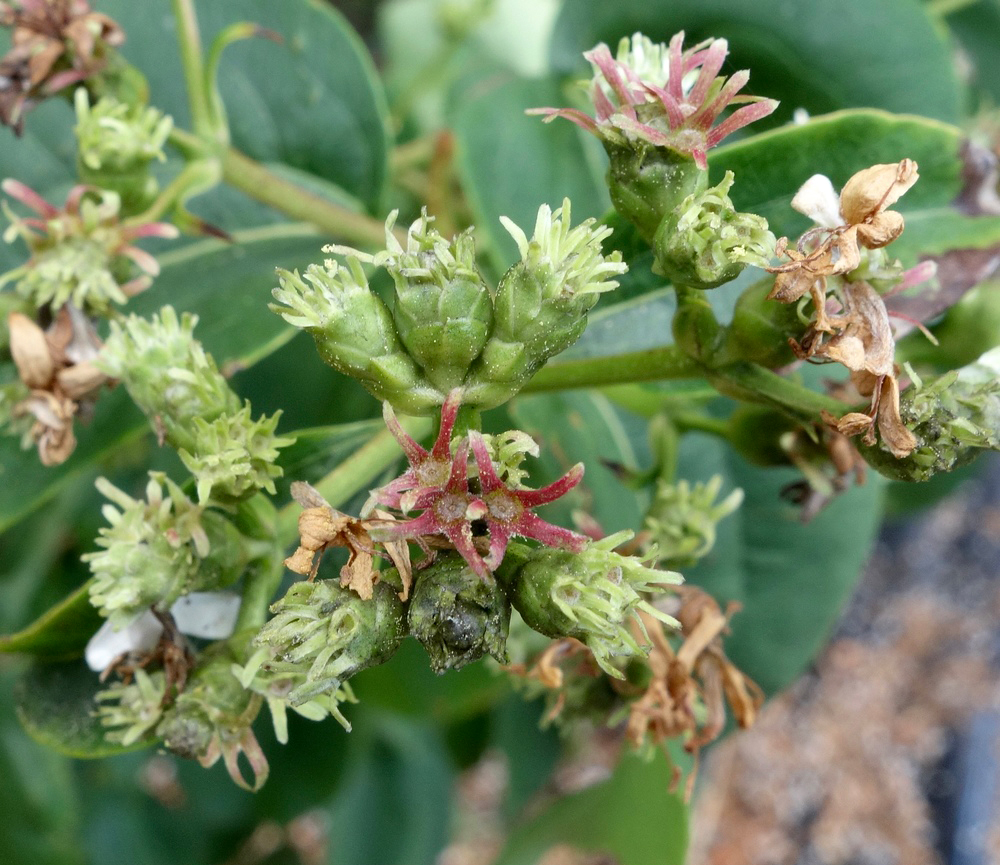
10
Cedar of Lebanon
Cedrus libani
SIEHE, WALTER
WALTER SIEHE

-
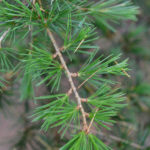
Small, needled foliage. -

Scaly dark-gray bark.
The Arnold Arboretum is part-museum, part-laboratory.
With a mission of cultivating the trees, shrubs, and vines that can survive in Boston’s climate, the Arboretum conducts many experiments into the hardiness of certain plants that aren’t guaranteed to survive in this landscape.
The cultivation of the cedar of Lebanon was an early success. Plants in the genus Cedrus grow in North Africa, across Asia Minor, and into India and Nepal. The cedar of Lebanon (Cedrus libani) grows in Lebanon, Syria, and Turkey.
Valued for its straight, elegant trunk and evergreen branches, cedar of Lebanon was successfully grown in Pennsylvania and New York throughout the 1800s. But American botanists couldn’t find a specimen that was hardy enough to survive Boston’s cold winters.
Since the 16th century, plant explorers had documented cedar of Lebanon trees that grew high in the Taurus Mountains of what is today Turkey, at altitudes of up to 6,500 feet. These trees stood in many feet of snow in the winter, indicating that they might be able to survive in colder environments than other cedar of Lebanon trees.
In 1900, Arboretum founding director Charles Sprague Sargent was eager to grow cedar of Lebanon. He contracted Walter Siehe, a German engineer living in the area who had written extensively about the flora of the Taurus Mountains, to collect seed from the trees.
On November 18 of 1900, Siehe wrote a letter to Sargent outlining his successes and expenses:
“Only a few days ago did I manage to obtain, after several futile attempts, 50 kilos of cones with good seeds. Since it was necessary to make a special trip, use many pack animals, and spend eight days of time for this, I am certain that you will not find the fee … too high.”
Sargent paid the fee, and the Arboretum received its shipment of cones in 1902. The propagation and horticultural staff met with immediate success—the seeds germinated and healthy specimens grew in the landscape, some of which are still standing before you today.
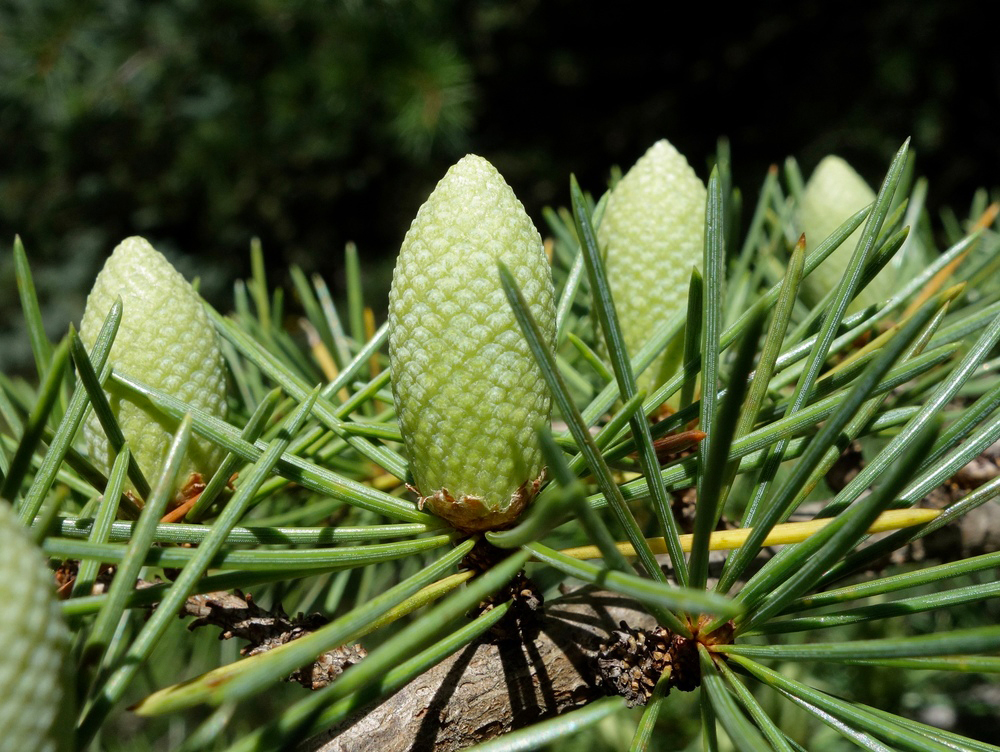
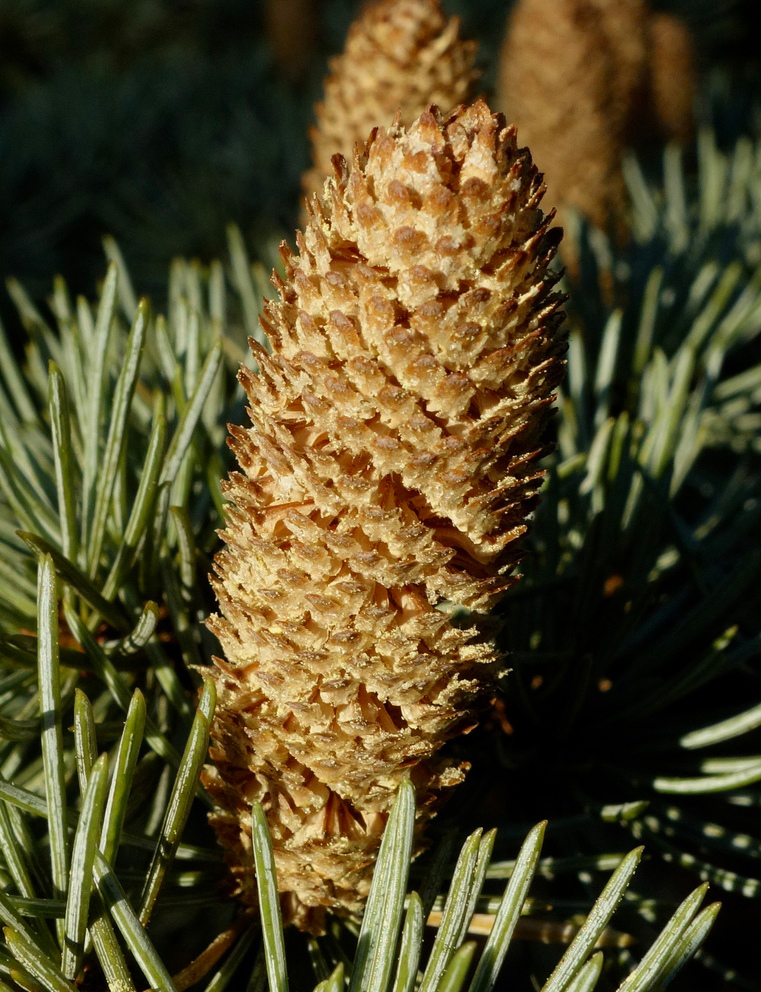
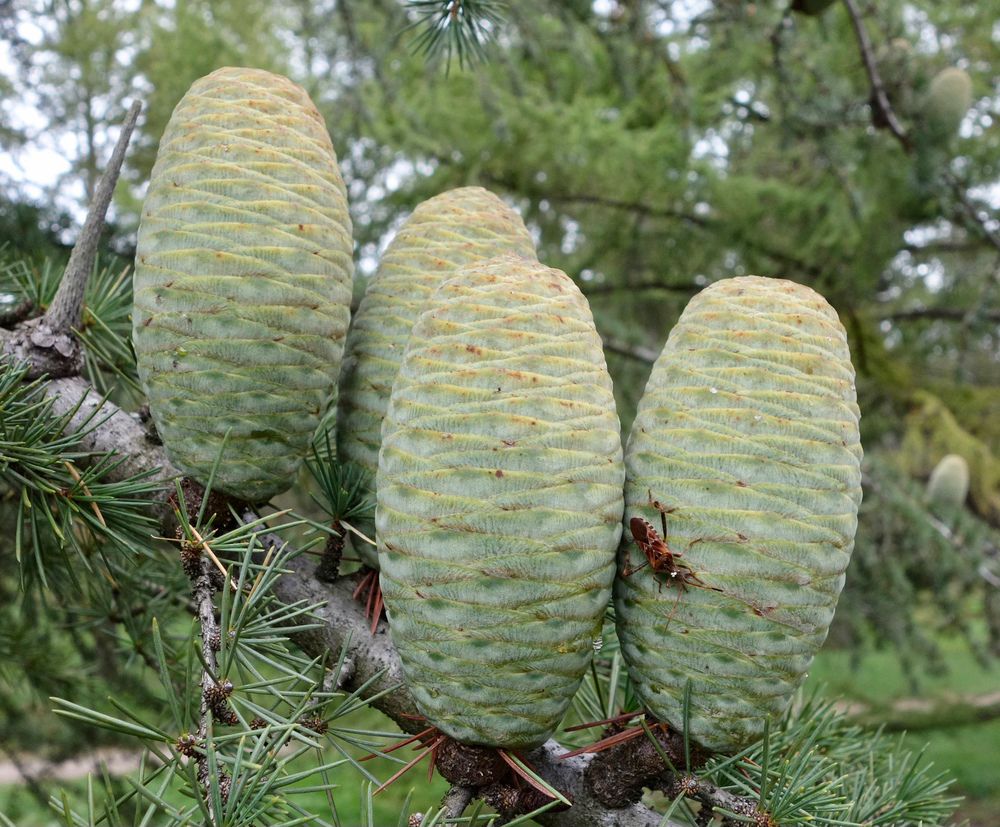
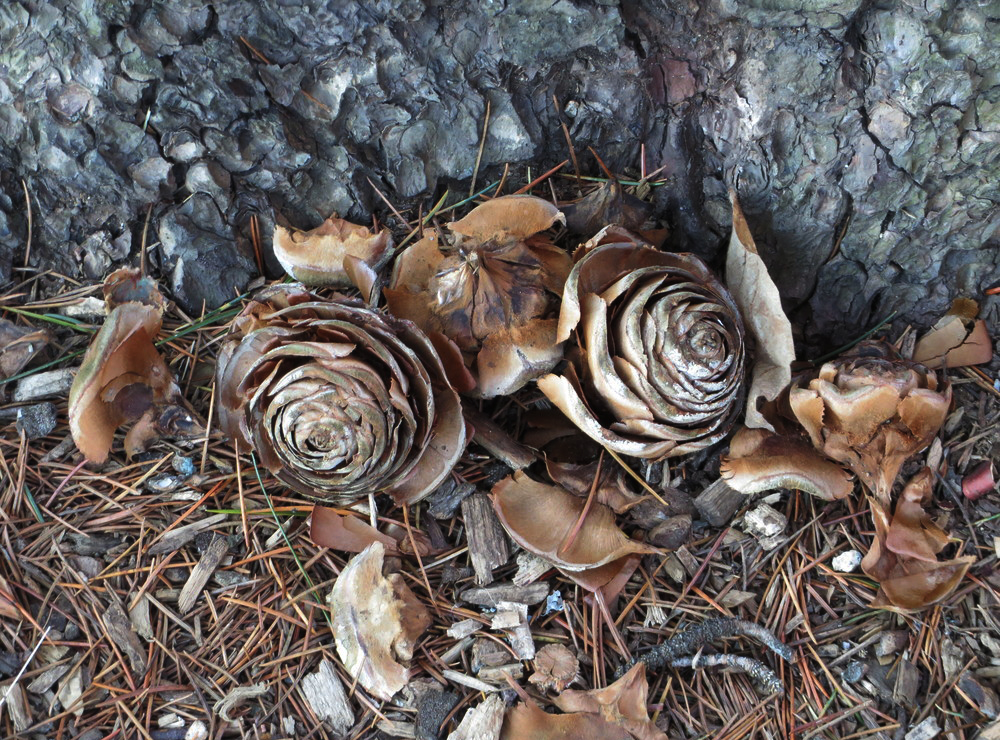
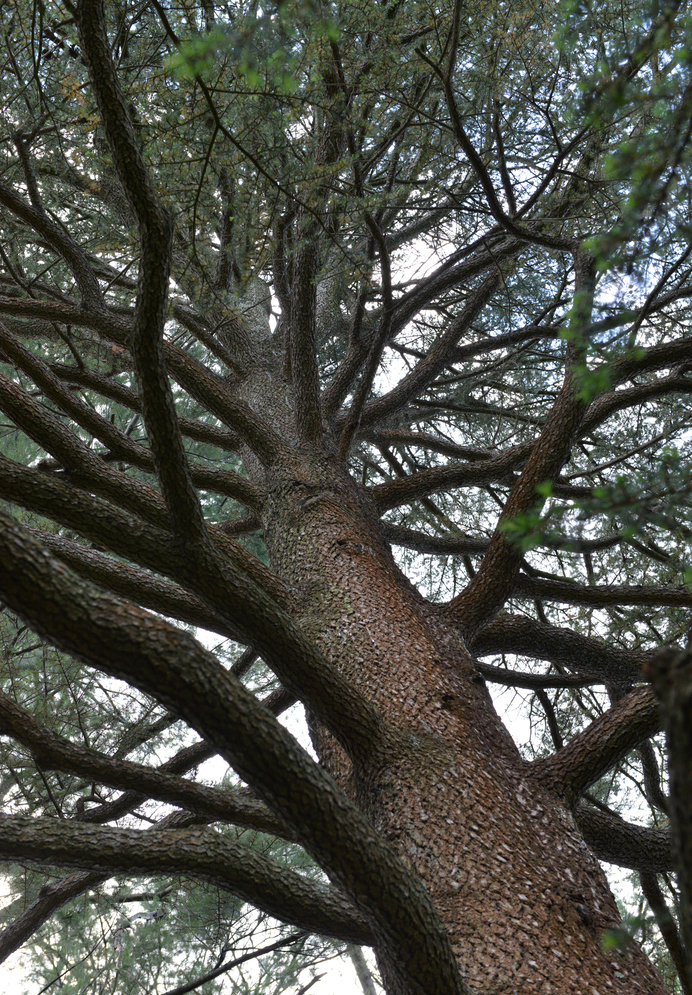

11
Sand Pear
Pyrus pyrifolia
WILSON, E. H. 395B
E. H. WILSON, ARNOLD ARB.

-
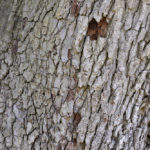
Light-gray, plated bark. -

Dark-green, simple leaves with toothed margins. -
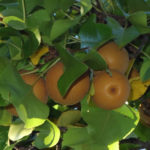
Large, yellow-brown fruits ripen in fall.
This specimen is one of the Arboretum’s many centenarians—trees over 100 years old.
The seed that grew into this sand pear was collected in 1907 by Arboretum plant collector Ernest Wilson on a two-year collecting trip in China. The seed arrived at the Arboretum in 1908, and several specimens were planted, one of which stands before you.
When deciding where to place new plants, the Arboretum’s curatorial and horticultural staff weigh a variety of factors. They consider where the plants would fit within the original layout for the Arboretum, which organized evolutionarily related plants in groups on the grounds. They also consider the plant’s particular needs for temperature, moisture, light, and soil. Some areas of the Arboretum—including the Explorers Garden—have been reserved for special ornamental collections.
Once a location is chosen and a specimen is planted, the curatorial team adheres to a rigorous schedule of mapping and inventorying, noting the plants’ growth, health, and any damage. Staff also record the timing of plants’ life cycle events (such as flowering and fruit development), take photographs, and create herbarium vouchers.
The Arboretum is divided into horticultural zones based on plant groupings, horticultural priority, and resource intensity necessary to care for the area. The zones are overseen by a team of horticulturists, arborists, and gardeners, who maintain the landscape year-round. The crew prunes branches, weeds undesirable plants, and manages soil health. They also work to mitigate pests, disease pressure, and drought.
For trees to thrive on the Arboretum’s grounds for a century or more takes a community of roughly 70 full-time staff, who steward this historic living laboratory.
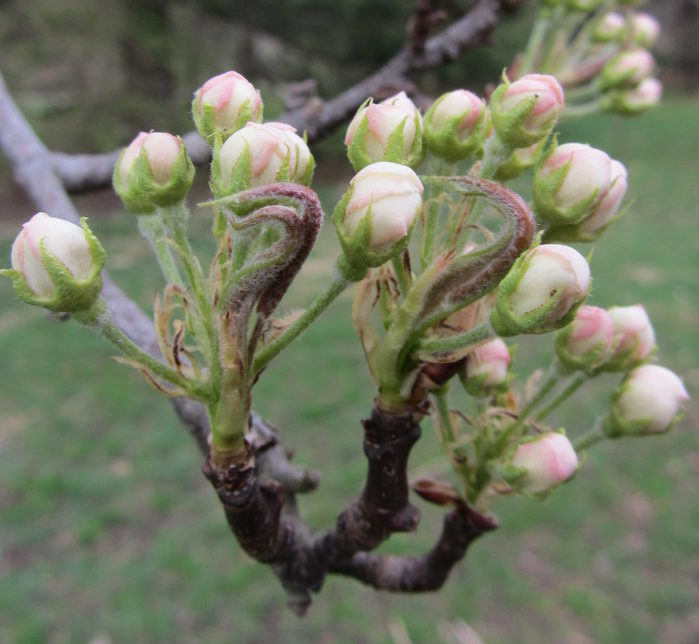
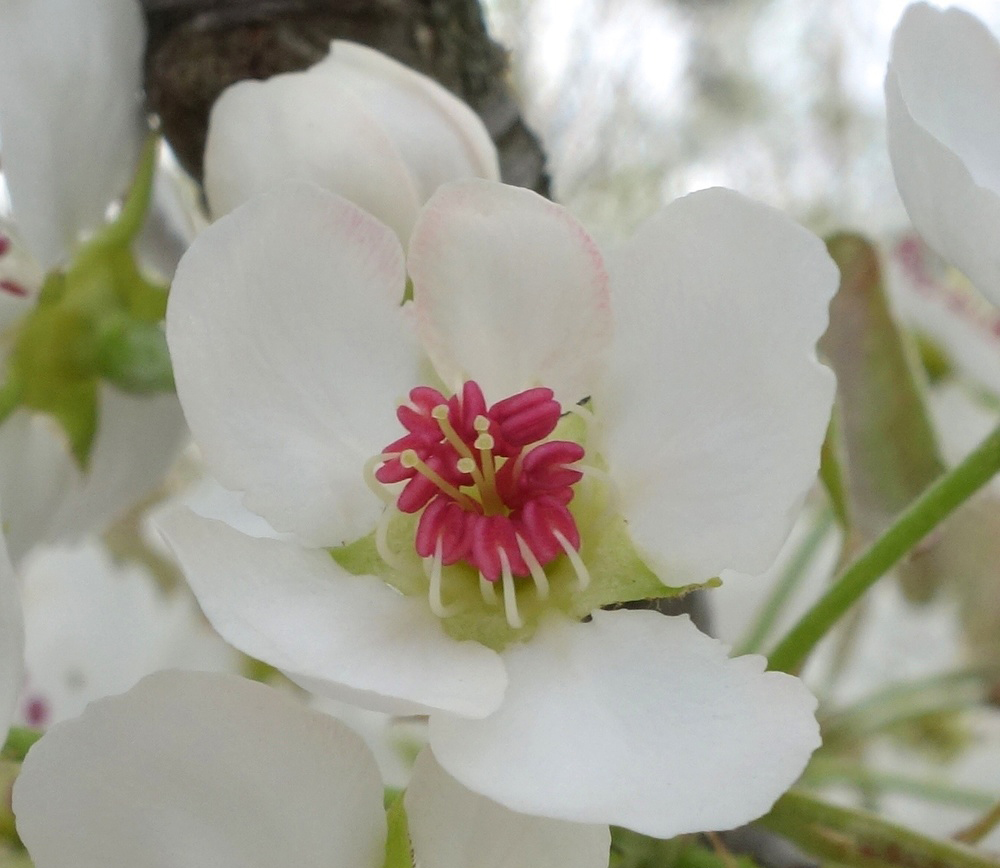


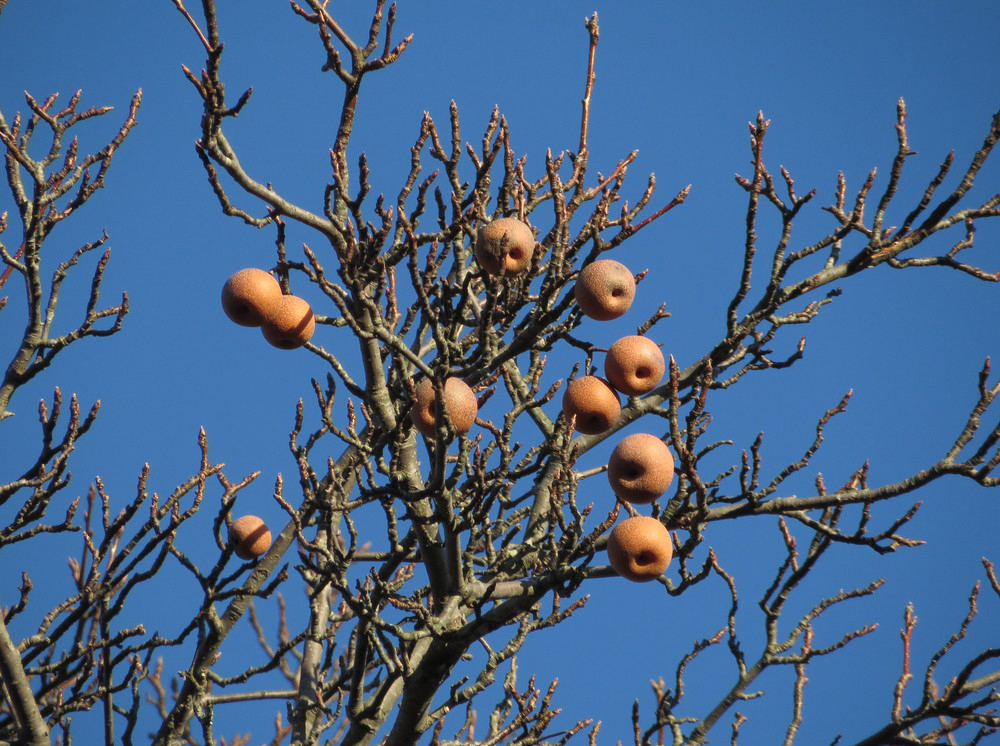
12
Kousa Dogwood
Cornus kousa
1980 S.A.B.E. 1316
1980 SINO-AMERICAN BOT. EXP.

-
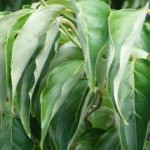
Dark-green, simple leaves. -
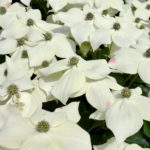
Inflorescences, each with four white bracts.
The kousa dogwood of East Asia bears many similarities to North America’s flowering dogwood tree.
In 1880, Arboretum founding director Charles Sprague Sargent was commissioned by the United States government to conduct a census on the nation’s trees and by the Smithsonian Institution to write a comprehensive catalogue of the trees of North America.
He spent the next several years crisscrossing the country. Sargent’s friend, environmentalist John Muir, described him as “flitting from side to side of the continent… through swamps, along lagoons, and from one palmy island to another, jolting in wagons or on horseback over the plains and deserts and mountain chains of the West.”
In 1892, Sargent embarked on the Arboretum’s first international plant-collecting expedition, to Japan. Other Arboretum staff and associates would soon follow suit. The seed for this kousa dogwood was collected on the 1980 Sino-American Botanical Expedition through China. On a steep, rocky slope below a mountain road, the collaborators came upon a small, spreading kousa dogwood laden with fruits. They collected the fruits, cleaned the seeds, and shipped them to the United States.
In 2015, the Arboretum launched the 10-year Campaign for the Living Collections, organizing multiple collecting trips a year in an effort to collect 400 species from the wild. The Campaign aims to improve the Arboretum’s living collections for the next century of scientists and visitors alike. Members of the greenhouse, curation, and horticultural staff have embarked on three or four expeditions each year, tracing routes in central China, the Ozarks, Japan, the Republic of Georgia, and the Pacific Northwest.
Exploration—whether of the plants in the forests of Japan or those in our own backyard—has always been central to the Arboretum’s identity.
